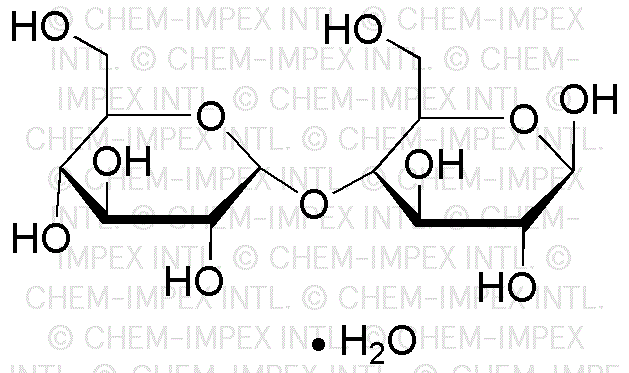D-Maltose monohydrate is widely utilized in research focused on:
- Food Industry: As a natural sweetener, it enhances the flavor of various food products, including baked goods and beverages, providing a healthier alternative to refined sugars.
- Pharmaceuticals: It serves as an excipient in drug formulations, aiding in the stabilization and solubility of active ingredients, which improves the efficacy of medications.
- Biotechnology: Used as a carbon source in microbial fermentation processes, it supports the growth of beneficial microorganisms in the production of enzymes and biofuels.
- Cosmetics: Its moisturizing properties make it a valuable ingredient in skincare products, helping to hydrate and soften the skin, thereby enhancing product performance.
- Research Applications: In laboratories, it is employed as a substrate in various biochemical assays, allowing scientists to study enzyme activities and metabolic pathways effectively.
General Information
Properties
Safety and Regulations
Applications
D-Maltose monohydrate is widely utilized in research focused on:
- Food Industry: As a natural sweetener, it enhances the flavor of various food products, including baked goods and beverages, providing a healthier alternative to refined sugars.
- Pharmaceuticals: It serves as an excipient in drug formulations, aiding in the stabilization and solubility of active ingredients, which improves the efficacy of medications.
- Biotechnology: Used as a carbon source in microbial fermentation processes, it supports the growth of beneficial microorganisms in the production of enzymes and biofuels.
- Cosmetics: Its moisturizing properties make it a valuable ingredient in skincare products, helping to hydrate and soften the skin, thereby enhancing product performance.
- Research Applications: In laboratories, it is employed as a substrate in various biochemical assays, allowing scientists to study enzyme activities and metabolic pathways effectively.
Documents
Safety Data Sheets (SDS)
The SDS provides comprehensive safety information on handling, storage, and disposal of the product.
Product Specification (PS)
The PS provides a comprehensive breakdown of the product’s properties, including chemical composition, physical state, purity, and storage requirements. It also details acceptable quality ranges and the product's intended applications.
Certificates of Analysis (COA)
Search for Certificates of Analysis (COA) by entering the products Lot Number. Lot and Batch Numbers can be found on a product’s label following the words ‘Lot’ or ‘Batch’.
*Catalog Number
*Lot Number
Certificates Of Origin (COO)
This COO confirms the country where the product was manufactured, and also details the materials and components used in it and whether it is derived from natural, synthetic, or other specific sources. This certificate may be required for customs, trade, and regulatory compliance.
*Catalog Number
*Lot Number
Safety Data Sheets (SDS)
The SDS provides comprehensive safety information on handling, storage, and disposal of the product.
DownloadProduct Specification (PS)
The PS provides a comprehensive breakdown of the product’s properties, including chemical composition, physical state, purity, and storage requirements. It also details acceptable quality ranges and the product's intended applications.
DownloadCertificates of Analysis (COA)
Search for Certificates of Analysis (COA) by entering the products Lot Number. Lot and Batch Numbers can be found on a product’s label following the words ‘Lot’ or ‘Batch’.
*Catalog Number
*Lot Number
Certificates Of Origin (COO)
This COO confirms the country where the product was manufactured, and also details the materials and components used in it and whether it is derived from natural, synthetic, or other specific sources. This certificate may be required for customs, trade, and regulatory compliance.


